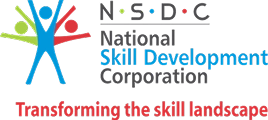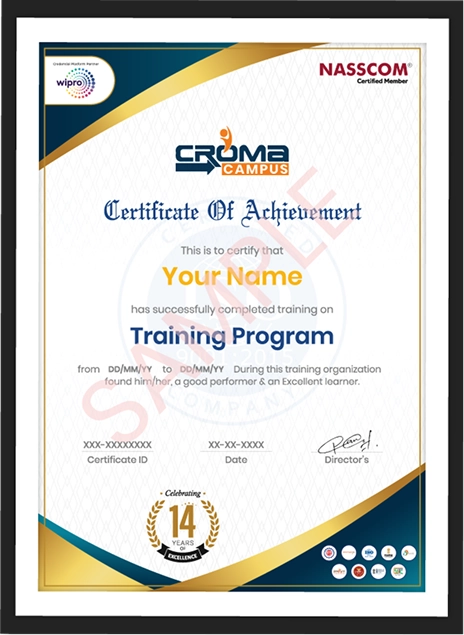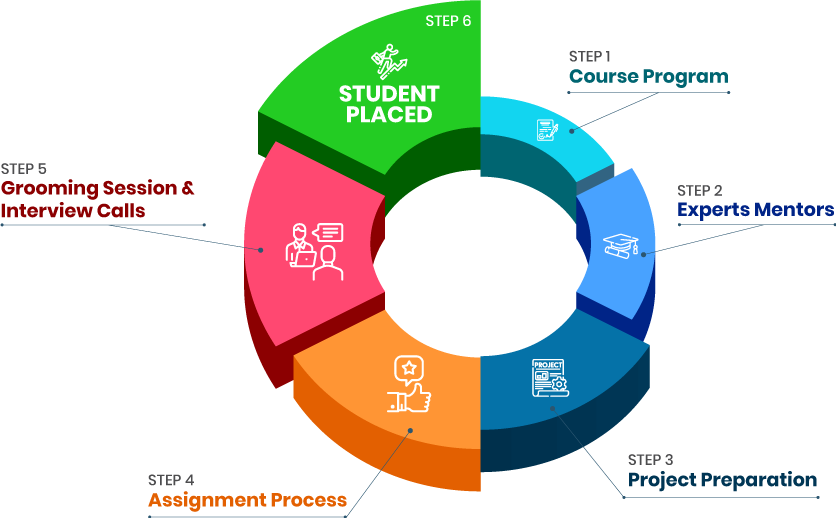Course Design By
Nasscom & Wipro
Students will learn how to construct complex ASP.NET MVC apps using the.NET Framework 4.5 tools and technologies.
The focus will be on coding approaches that increase the performance and scalability of online applications.
ASP.NET MVC will be introduced and compared to WebForms to teach students when each should or could be used.
Web developers will learn how to segregate the user interface, data access, and application logic on websites in this course.
This course is for people who want to learn how to build complex web apps and completely manage displayed HTML.
The Microsoft Certification Training course can help you acquire a job by improving your resume, but it can also help you develop within your current company.
If you have the certification program's credentials, you may be more likely to negotiate a wage increase.
You should be able to become more productive with the knowledge you gain through Microsoft certification training.
Our Microsoft Certification Training can help you stand out by providing further verification of your knowledge.
As you hunt for new work, the certification program may help you stand out in your professional network.
The MCSD Azure Solutions Architect certification is becoming more popular as Microsoft continues to gain market share in the cloud.
There is a lot of evidence that the popularity and desirability of this qualification among companies will continue to rise.
With this certification, learners will be able to architect, construct, and administer Microsoft Azure solutions.
The MCSD Azure Solutions Architect certification necessitates a more extensive set of abilities, including programming and programming languages.
Applicants must show they can work as a developer, IT professional, DevOps practitioner, and designer/architect.
Organize IT departments and serve as liaisons with other departments to make software and system enhancements recommendations.
Provide IT support to internal employees within the organization.
Reorganize employee workstations for new hires.
Hands-on fixes at the desktop level, covering system and application installation and upgrades, as well as software and configuration.
Information technology-related processes and procedures should be documented.
Examine IT operations and give improved suggestions.
You'll have the opportunity to interview for employment and work in prestigious fields.
Google, TCS, IBM, Cognizant Technology, Accenture, and other major businesses around the world are among the hiring industries.
Our job placement training prepares you to be successful in your new position.
We'll even help you be hired by worldwide organizations and business behemoths by providing 100 percent placement support.
We'll work with you to create the professional profile you've always wanted.
we train you to get hired.

By registering here, I agree to Croma Campus Terms & Conditions and Privacy Policy
+ More Lessons
Course Design By

Nasscom & Wipro
Course Offered By

Croma Campus

Stories
success
inspiration


career upgrad


career upgrad


career upgrad


career upgrad
19-Jul-2025*
21-Jul-2025*
16-Jul-2025*
19-Jul-2025*
21-Jul-2025*
16-Jul-2025*

You will get certificate after
completion of program

You will get certificate after
completion of program

You will get certificate after
completion of program
in Collaboration with






Empowering Learning Through Real Experiences and Innovation

we train you to get hired.

Phone (For Voice Call):
+91-971 152 6942WhatsApp (For Call & Chat):
+91-971 152 6942Get a peek through the entire curriculum designed that ensures Placement Guidance
Course Design By


Course Offered By

Ready to streamline Your Process? Submit Your batch request today!
At Croma Campus, we have a dedicated team who will assist you once the course is completed.
We offer a variety of payment methods, such as Net Banking, Cash, Credit Card, UPI, and others.
There are no prerequisites for this course.
At Croma Campus, we have a dedicated team who will assist you once the course is completed.

FOR QUERIES, FEEDBACK OR ASSISTANCE
Best of support with us
For Voice Call
+91-971 152 6942For Whatsapp Call & Chat
+91-9711526942